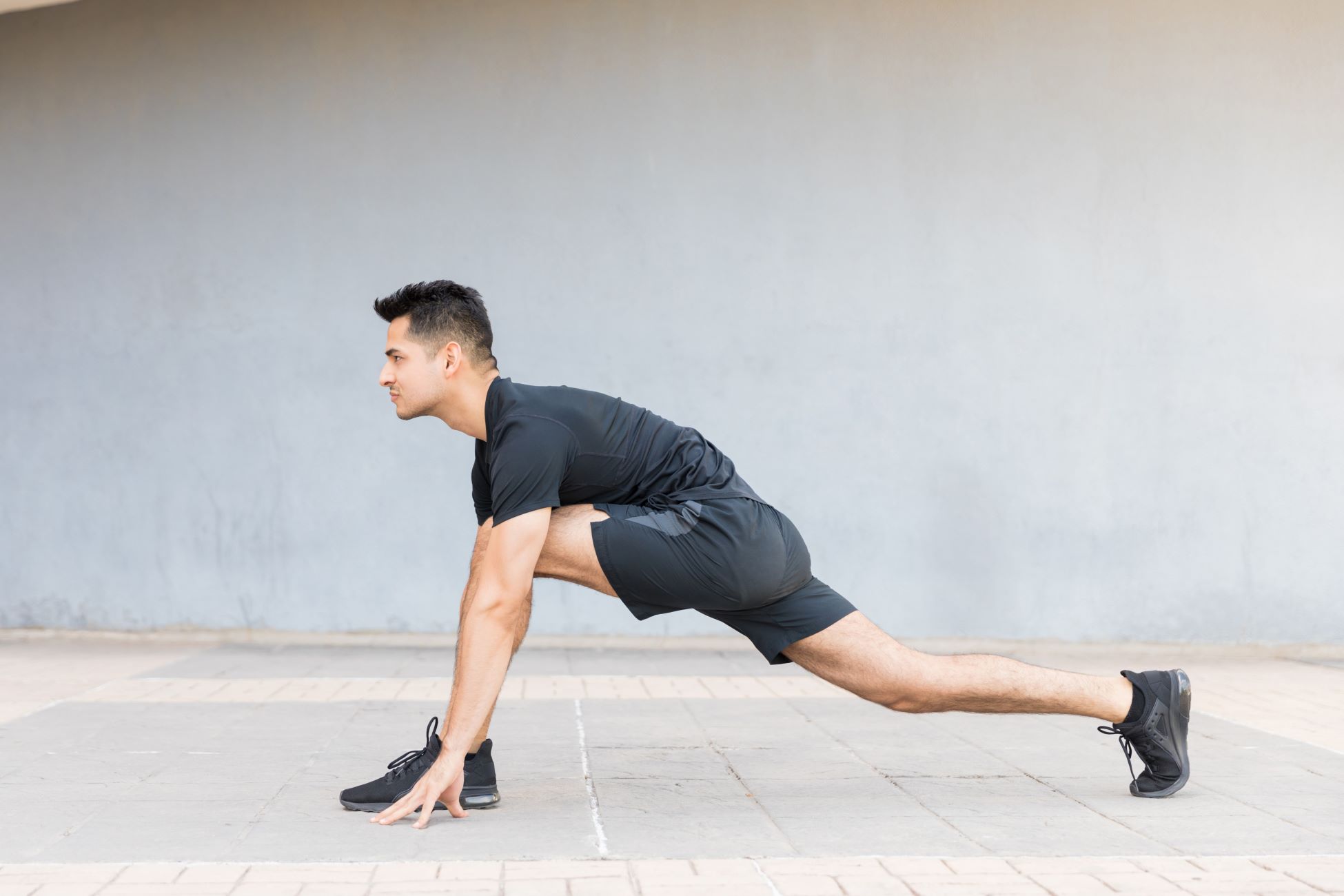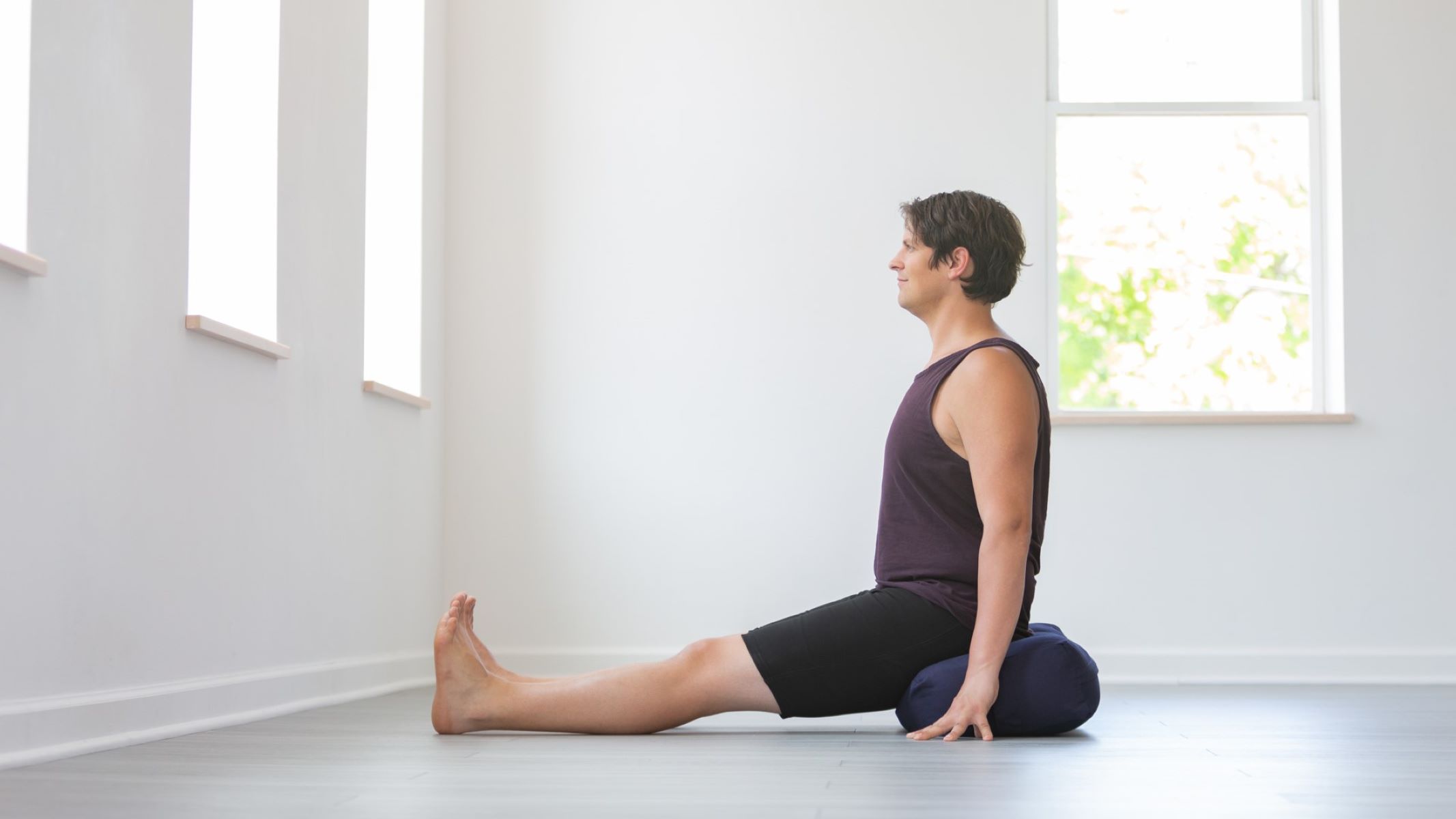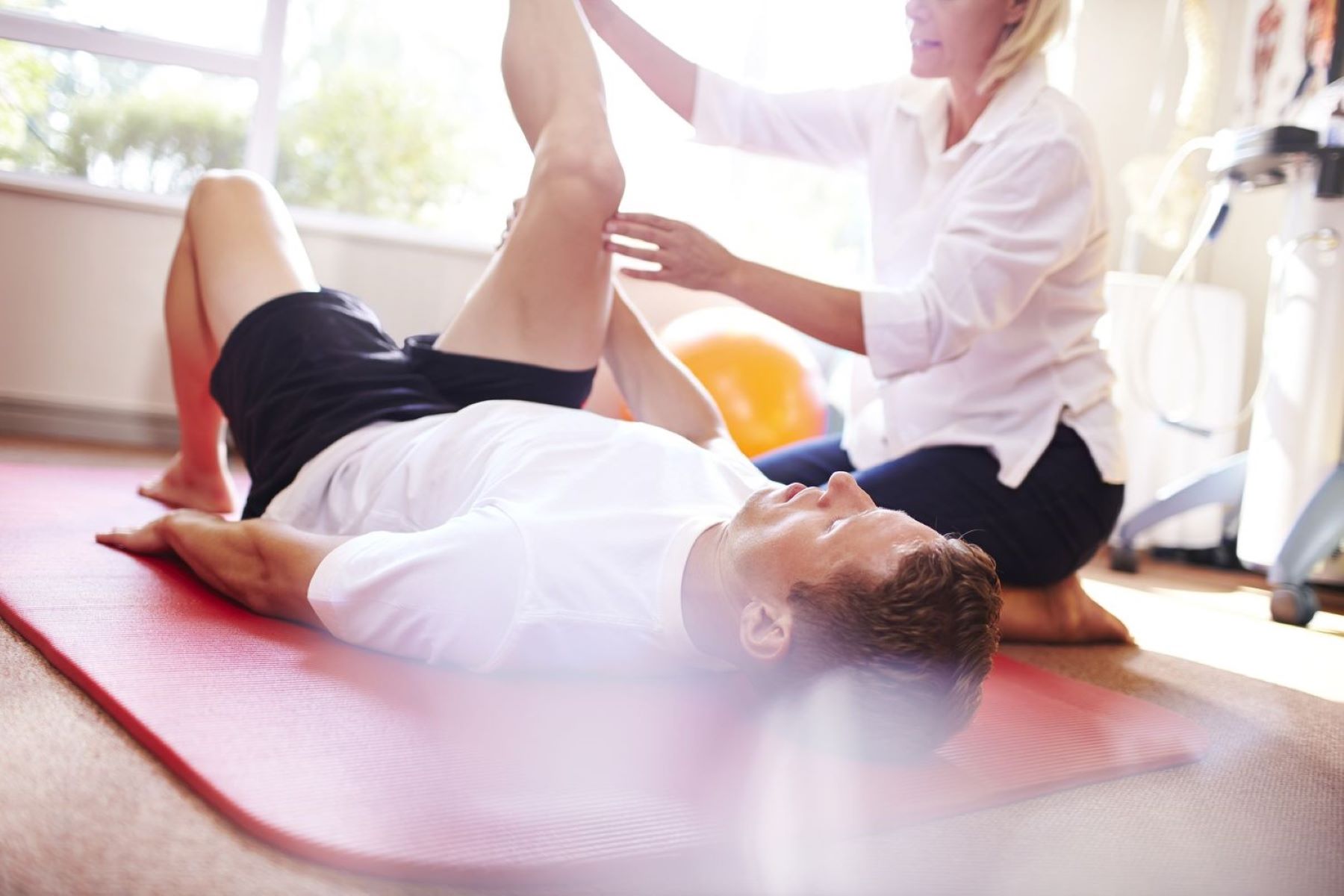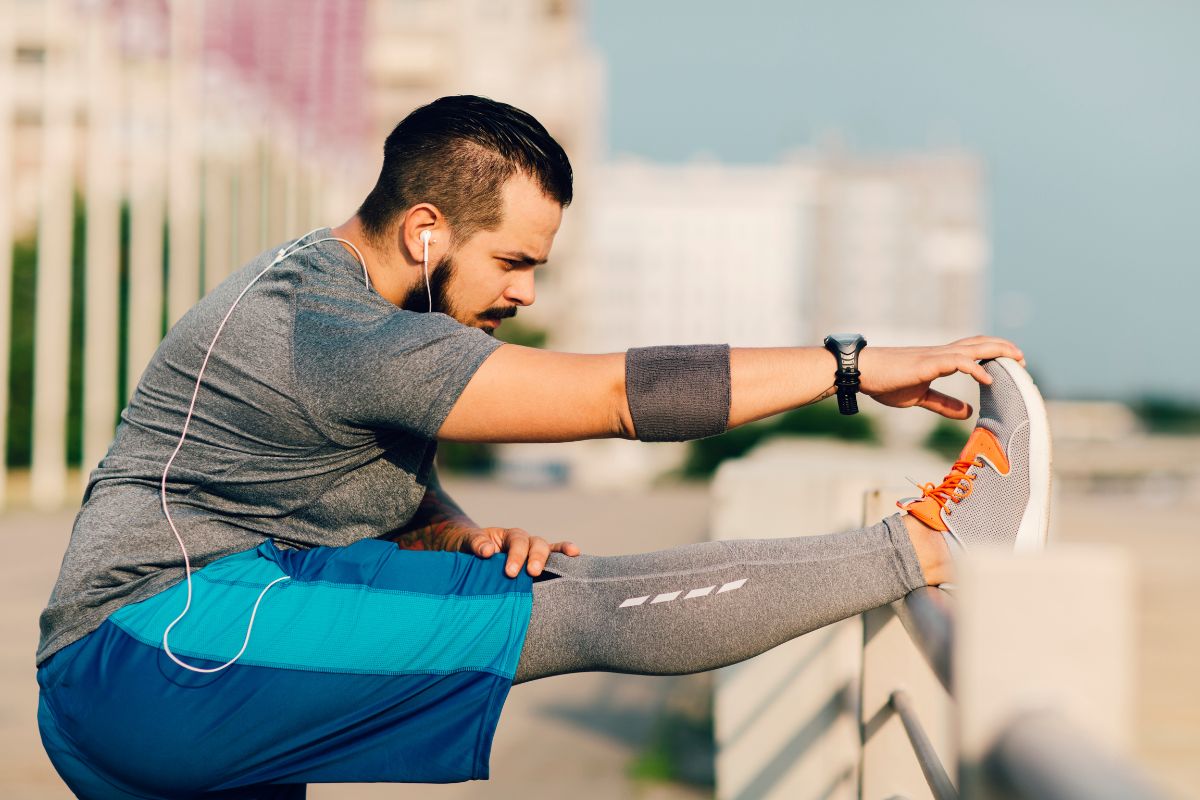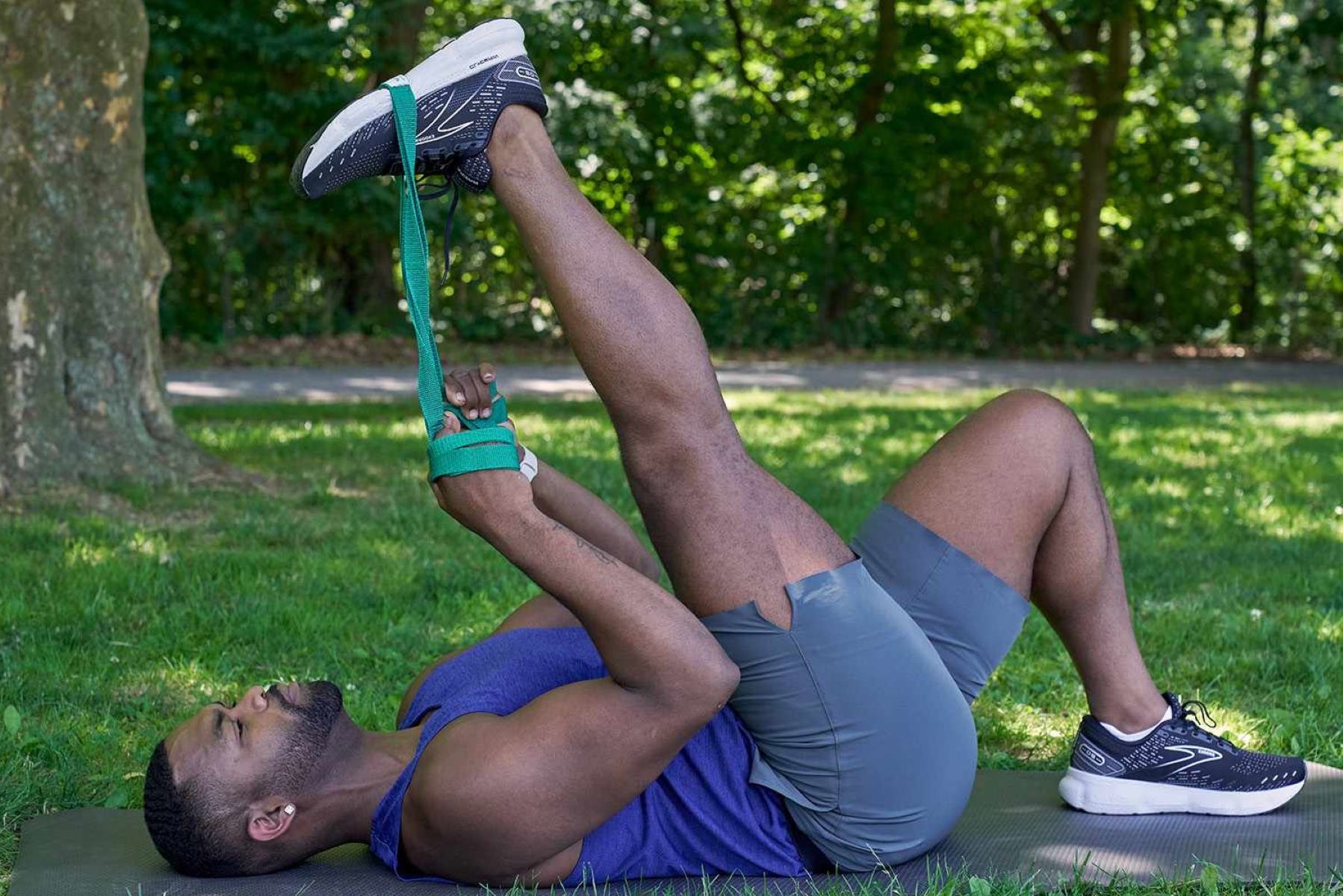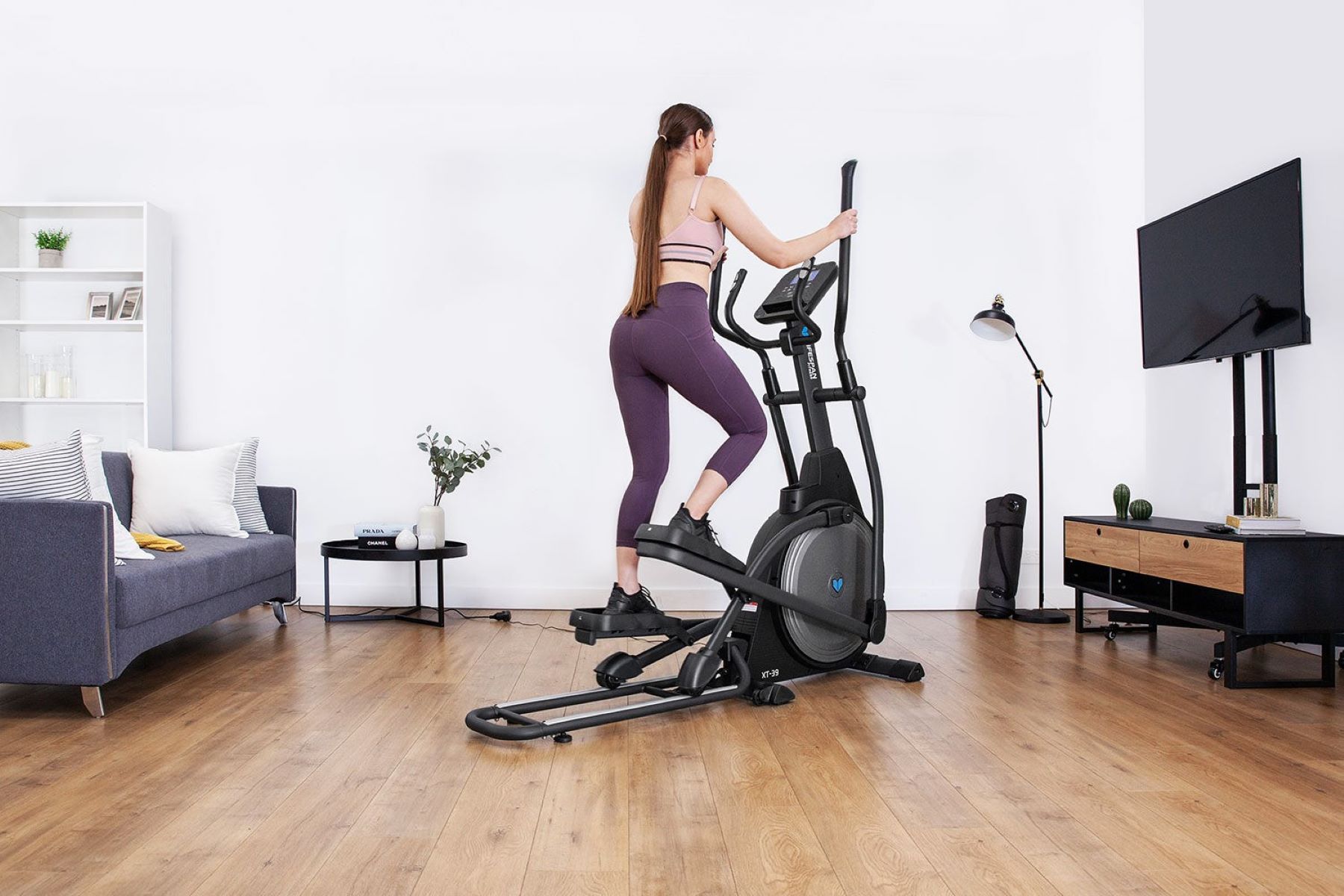Home>Health & Nutrition>Injury Prevention>Top 4 Hamstring Stretches Recommended For Runners With Tight Hamstrings


Injury Prevention
Top 4 Hamstring Stretches Recommended For Runners With Tight Hamstrings
Published: February 25, 2024
Prevent hamstring injuries with these top 4 stretches for runners with tight hamstrings. Improve flexibility and reduce the risk of strains.
(Many of the links in this article redirect to a specific reviewed product. Your purchase of these products through affiliate links helps to generate commission for Therunningadvisor.com, at no extra cost. Learn more)
Table of Contents
Introduction
Hamstring flexibility is a crucial aspect of a runner's overall performance and well-being. The hamstrings, a group of three muscles located at the back of the thigh, play a pivotal role in running, as they are responsible for extending the hip and flexing the knee during each stride. However, tight hamstrings can lead to discomfort, reduced mobility, and an increased risk of injury for runners.
Incorporating hamstring stretches into a runner's routine can significantly improve flexibility, alleviate muscle tightness, and enhance overall performance. By dedicating time to stretching and maintaining optimal hamstring flexibility, runners can mitigate the risk of strains, tears, and other injuries that may impede their training and progress.
In this article, we will explore the top four hamstring stretches recommended for runners with tight hamstrings. These stretches are designed to target the hamstrings effectively, promoting flexibility and reducing the likelihood of injury. Whether you are a seasoned runner or just starting out, integrating these stretches into your regular exercise regimen can contribute to improved performance and a reduced risk of hamstring-related issues.
Understanding the importance of hamstring flexibility and incorporating targeted stretches can make a substantial difference in a runner's overall well-being and athletic endeavors. Let's delve into the specific stretches that can help runners achieve and maintain optimal hamstring flexibility, ultimately enhancing their running experience.
Read more: Top 4 Back Stretches Recommended For Runners
Understanding the Importance of Hamstring Flexibility for Runners
Hamstring flexibility holds immense significance for runners, as it directly impacts their performance, comfort, and risk of injury. The hamstrings, consisting of three muscles – the biceps femoris, semitendinosus, and semimembranosus, are vital for the running motion. These muscles are engaged during the propulsive phase of running, aiding in hip extension and knee flexion with each stride. Therefore, maintaining optimal hamstring flexibility is crucial for runners of all levels.
Tight hamstrings can lead to a range of issues that affect a runner's overall well-being and performance. When the hamstrings are tight, they can limit the range of motion in the hips and pelvis, potentially altering a runner's gait and stride length. This restriction can lead to compensatory movements, placing additional stress on other muscles and joints, such as the lower back and knees. Over time, these compensations can contribute to discomfort, inefficiency in running mechanics, and an increased risk of injury.
Furthermore, inadequate hamstring flexibility can lead to an imbalance in muscle strength and flexibility, which may impact a runner's overall athletic performance. Tight hamstrings can hinder the ability to generate optimal power and stride length, potentially compromising speed and endurance. Additionally, reduced flexibility in the hamstrings can contribute to muscle imbalances, increasing the likelihood of overuse injuries and muscular strains.
By prioritizing hamstring flexibility, runners can experience a myriad of benefits. Improved flexibility in the hamstrings allows for a greater range of motion in the hips and pelvis, facilitating a more efficient and fluid running stride. This enhanced mobility can contribute to better running economy, allowing runners to conserve energy and maintain their pace over longer distances.
Moreover, maintaining optimal hamstring flexibility can aid in injury prevention and recovery. Flexible hamstrings are less prone to strains and tears, reducing the risk of sidelining injuries that can disrupt training and racing schedules. Additionally, incorporating hamstring stretches into a runner's routine can alleviate muscle tightness, enhance circulation, and promote overall muscular health.
In essence, hamstring flexibility is a cornerstone of a runner's physical well-being and performance. By understanding the importance of maintaining optimal hamstring flexibility and integrating targeted stretches into their training regimen, runners can enhance their overall running experience, minimize the risk of injury, and strive towards achieving their athletic goals.
The Standing Hamstring Stretch
The standing hamstring stretch is a fundamental exercise that effectively targets the hamstrings, promoting flexibility and mobility in the back of the thighs. This stretch can be performed virtually anywhere, making it a convenient addition to a runner's pre-run or post-run routine.
To execute the standing hamstring stretch:
- Begin by standing with your feet hip-width apart, maintaining a straight posture with your shoulders relaxed.
- Extend one leg forward, keeping the knee slightly bent to reduce strain on the lower back.
- Hinge at the hips, leaning forward while maintaining a straight back, and reach towards the extended foot.
- As you lean forward, focus on feeling a gentle stretch along the back of the extended leg, specifically in the hamstring and calf muscles.
- Hold the stretch for 15-30 seconds, breathing deeply and allowing the muscles to gradually relax and elongate.
- Return to the starting position and repeat the stretch with the opposite leg.
The standing hamstring stretch can be modified to target different areas of the hamstring muscles. For instance, by slightly rotating the extended leg inward or outward during the stretch, varying areas of the hamstrings can be emphasized, providing a comprehensive stretch for the entire muscle group.
Integrating the standing hamstring stretch into a runner's routine can yield numerous benefits. This stretch helps alleviate muscle tightness, enhances flexibility, and contributes to improved running mechanics. By regularly incorporating this stretch, runners can mitigate the risk of hamstring-related injuries and discomfort, ultimately supporting their overall running performance and well-being.
In summary, the standing hamstring stretch is a simple yet effective exercise that can significantly enhance a runner's hamstring flexibility and overall mobility. By incorporating this stretch into their regular routine, runners can experience improved muscular flexibility, reduced risk of injury, and enhanced comfort during their runs.
The Seated Hamstring Stretch
The seated hamstring stretch is a highly effective exercise for targeting and enhancing the flexibility of the hamstrings, making it an invaluable addition to a runner's stretching routine. This stretch can be performed virtually anywhere, requiring minimal space and no additional equipment, making it a convenient and accessible option for runners seeking to improve their hamstring flexibility.
To execute the seated hamstring stretch:
- Begin by sitting on the floor with your legs extended in front of you, ensuring that your back is straight and your shoulders are relaxed.
- Gently bend one knee, bringing the sole of the foot towards the inner thigh of the opposite leg.
- Keeping the extended leg straight, hinge at the hips and lean forward, reaching towards the toes of the extended foot.
- As you lean forward, focus on feeling a gentle stretch along the back of the extended leg, specifically targeting the hamstring muscles.
- Hold the stretch for 15-30 seconds, breathing deeply and allowing the muscles to gradually relax and elongate.
- Return to the starting position and repeat the stretch with the opposite leg.
The seated hamstring stretch can be modified to adjust the intensity of the stretch. By reaching towards different areas of the foot, such as the toes or the ankle, runners can vary the degree of stretch experienced in the hamstrings, tailoring the exercise to their individual flexibility and comfort levels.
Incorporating the seated hamstring stretch into a runner's routine offers a multitude of benefits. This stretch effectively alleviates muscle tightness, enhances flexibility, and contributes to improved overall mobility. By consistently integrating the seated hamstring stretch into their stretching regimen, runners can reduce the risk of hamstring-related injuries and discomfort, ultimately supporting their overall running performance and well-being.
In summary, the seated hamstring stretch is a versatile and impactful exercise that can significantly improve a runner's hamstring flexibility and overall mobility. By including this stretch in their regular routine, runners can experience enhanced muscular flexibility, reduced risk of injury, and increased comfort during their runs.
The Supine Hamstring Stretch
The supine hamstring stretch, also known as the lying hamstring stretch, is a highly effective and accessible exercise for targeting and enhancing the flexibility of the hamstrings. This stretch is particularly beneficial for runners, as it provides a comprehensive and deep stretch to the entire length of the hamstring muscles, promoting improved flexibility and mobility in the back of the thighs.
To perform the supine hamstring stretch:
- Begin by lying on your back with both legs extended.
- Gently lift one leg towards the ceiling, keeping the knee slightly bent to reduce strain on the lower back.
- Using your hands, clasp behind the thigh or calf of the lifted leg, providing support and control during the stretch.
- Slowly straighten the lifted leg, aiming to bring it as close to a vertical position as comfortably possible.
- As you hold the extended leg in this position, focus on feeling a deep and targeted stretch along the back of the thigh, specifically in the hamstring muscles.
- Hold the stretch for 15-30 seconds, breathing deeply and allowing the muscles to gradually relax and elongate.
- Gently lower the extended leg back to the starting position and repeat the stretch with the opposite leg.
The supine hamstring stretch offers a unique advantage by allowing the individual to control the intensity and depth of the stretch. By adjusting the angle of the lifted leg and the degree of knee flexion, runners can tailor the stretch to their specific flexibility and comfort levels, ensuring a personalized and effective stretching experience.
Incorporating the supine hamstring stretch into a runner's regular stretching routine yields a multitude of benefits. This stretch provides a deep and targeted release of muscle tightness, effectively enhancing flexibility and promoting improved overall mobility. By consistently integrating the supine hamstring stretch into their stretching regimen, runners can significantly reduce the risk of hamstring-related injuries and discomfort, ultimately supporting their overall running performance and well-being.
In summary, the supine hamstring stretch is a valuable and impactful exercise that can substantially improve a runner's hamstring flexibility and overall mobility. By including this stretch in their regular routine, runners can experience enhanced muscular flexibility, reduced risk of injury, and increased comfort during their runs.
Read more: Top 5 Calf Stretches Recommended For Runners
The Standing Wall Hamstring Stretch
The standing wall hamstring stretch is a highly effective and accessible exercise that specifically targets the hamstrings, offering a deep and comprehensive stretch to enhance flexibility and mobility in the back of the thighs. This stretch is particularly beneficial for runners, as it provides a controlled and supportive environment for achieving an optimal hamstring stretch, ultimately contributing to improved running performance and reduced risk of injury.
To perform the standing wall hamstring stretch:
- Begin by standing facing a wall, approximately an arm's length away.
- Extend one leg forward and place the heel on the ground, keeping the toes pointing upward.
- With the extended leg, gently lean forward, placing both hands on the wall for support.
- As you lean forward, focus on maintaining a straight back and feeling a deep stretch along the back of the extended leg, specifically targeting the hamstring muscles.
- Hold the stretch for 15-30 seconds, allowing the muscles to gradually relax and elongate.
- Return to the starting position and repeat the stretch with the opposite leg.
The standing wall hamstring stretch offers a unique advantage by utilizing the wall for support and stability, allowing runners to control the intensity and depth of the stretch. By adjusting the distance from the wall and the degree of lean, individuals can tailor the stretch to their specific flexibility and comfort levels, ensuring a personalized and effective stretching experience.
Incorporating the standing wall hamstring stretch into a runner's regular stretching routine provides a multitude of benefits. This stretch offers a deep and targeted release of muscle tightness, effectively enhancing flexibility and promoting improved overall mobility. By consistently integrating the standing wall hamstring stretch into their stretching regimen, runners can significantly reduce the risk of hamstring-related injuries and discomfort, ultimately supporting their overall running performance and well-being.
In summary, the standing wall hamstring stretch is a valuable and impactful exercise that can substantially improve a runner's hamstring flexibility and overall mobility. By including this stretch in their regular routine, runners can experience enhanced muscular flexibility, reduced risk of injury, and increased comfort during their runs.
Conclusion
In conclusion, hamstring flexibility is a critical component of a runner's overall performance and well-being. The ability to maintain optimal hamstring flexibility directly impacts a runner's comfort, mobility, and risk of injury. By incorporating targeted hamstring stretches into their routine, runners can significantly enhance their flexibility, reduce the likelihood of discomfort and injury, and ultimately improve their running experience.
The standing hamstring stretch, seated hamstring stretch, supine hamstring stretch, and standing wall hamstring stretch are four highly effective exercises recommended for runners with tight hamstrings. These stretches offer a comprehensive approach to targeting and enhancing the flexibility of the hamstrings, providing runners with the tools to mitigate the risk of strains, tears, and other injuries that may impede their training and progress.
Each of these stretches can be seamlessly integrated into a runner's pre-run or post-run routine, offering convenience and accessibility. By consistently incorporating these stretches, runners can experience a myriad of benefits, including improved muscular flexibility, reduced risk of injury, and increased comfort during their runs. Additionally, these stretches contribute to enhanced running mechanics, allowing for a more efficient and fluid stride, ultimately supporting better running economy and overall performance.
Furthermore, the versatility and adaptability of these stretches allow runners to tailor the exercises to their individual flexibility and comfort levels, ensuring a personalized and effective stretching experience. Whether a seasoned runner or just starting out, the incorporation of these stretches into a regular exercise regimen can contribute to improved performance and a reduced risk of hamstring-related issues.
Understanding the importance of hamstring flexibility and integrating these targeted stretches can make a substantial difference in a runner's overall well-being and athletic endeavors. By prioritizing hamstring flexibility, runners can experience improved mobility, enhanced injury prevention, and a more enjoyable running experience.
In essence, the incorporation of these top four hamstring stretches into a runner's routine can lead to enhanced muscular flexibility, reduced risk of injury, and increased comfort during their runs. By embracing the significance of hamstring flexibility and consistently incorporating these stretches, runners can strive towards achieving their athletic goals while minimizing the risk of discomfort and injury.

